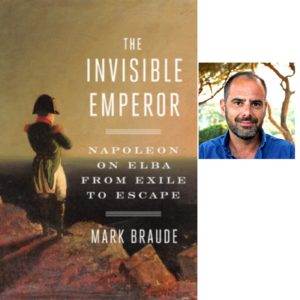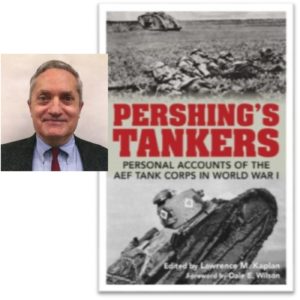Podcast: Play in new window | Download
Subscribe: RSS
 Mark Braude is a historian whose specialty is French history. He’s written a new book on Napoleon Bonaparte’s time on Elba and we discussed the book.
Mark Braude is a historian whose specialty is French history. He’s written a new book on Napoleon Bonaparte’s time on Elba and we discussed the book.
2:30 – Mark talks about his start in French history and how he started writing about Napoleon.
4:06 – Mark talks about the book.
6:45 – Mark talks about ideas on why Napoleon was sent to Elba. We talk about how the smaller characters in the book also become very interesting.
17:45 – We talk about French taverns and their interplay with public opinion.
20:59 – Mark talks about the historical valleys between periods of war.
22:35 – Mark talks about his research materials.
27:00 – Mark talks about a prison he visited on Elba where Napoleon had stayed before it was a prison and how this visit connects to the book.
33:24 – Mark talks about why no one has written on this subject before.
October 16, 2018 515am
43:53 – Mark talks about the women in Napoleon’s life.
49:06 – Mark talks about how he developed his skills in writing good narrative non-fiction.
53:18 – Mark talks about his research into the Michelin company.
55:59 – Mark has a website, markbraude.com
Links of interest
For more “Military History Inside Out” please follow me on Facebook at warscholar, on twitter at Warscholar, on youtube at warscholar1945 and on Instagram @crisalvarezswarscholar
Guests: Mark Braude
Host: Cris Alvarez
Tags: military, history, military history, conflict, war, interview, non-fiction book, Napoleon, British, French Empire, Elba, Campbell, Navy, Bonaparte

 Lawrence Kaplan is a military historian who has worked for the US Army and has written numerous books on the subject. Today we spoke about his latest book on the American tank corps during WWI.
Lawrence Kaplan is a military historian who has worked for the US Army and has written numerous books on the subject. Today we spoke about his latest book on the American tank corps during WWI. Martin Kirby and Margaret Baguley are two of three Australian academics who have been editing a new book exploring how war since 1914 has been represented in the arts in Australasia, the US, and in the British Isles. I spoke with Margaret and Martin about the book.
Martin Kirby and Margaret Baguley are two of three Australian academics who have been editing a new book exploring how war since 1914 has been represented in the arts in Australasia, the US, and in the British Isles. I spoke with Margaret and Martin about the book.